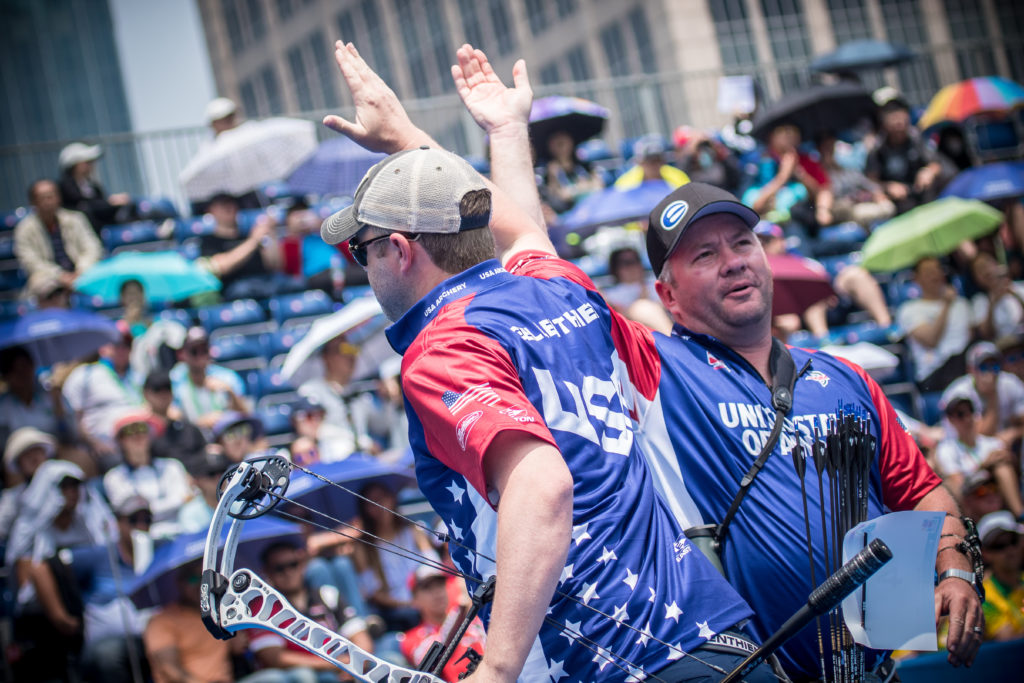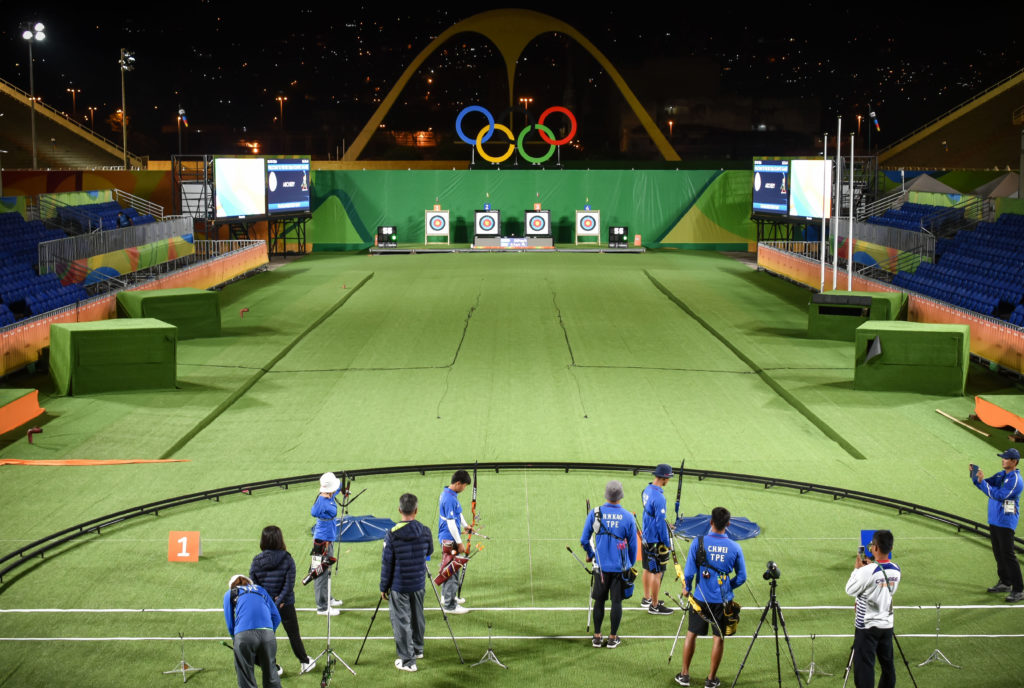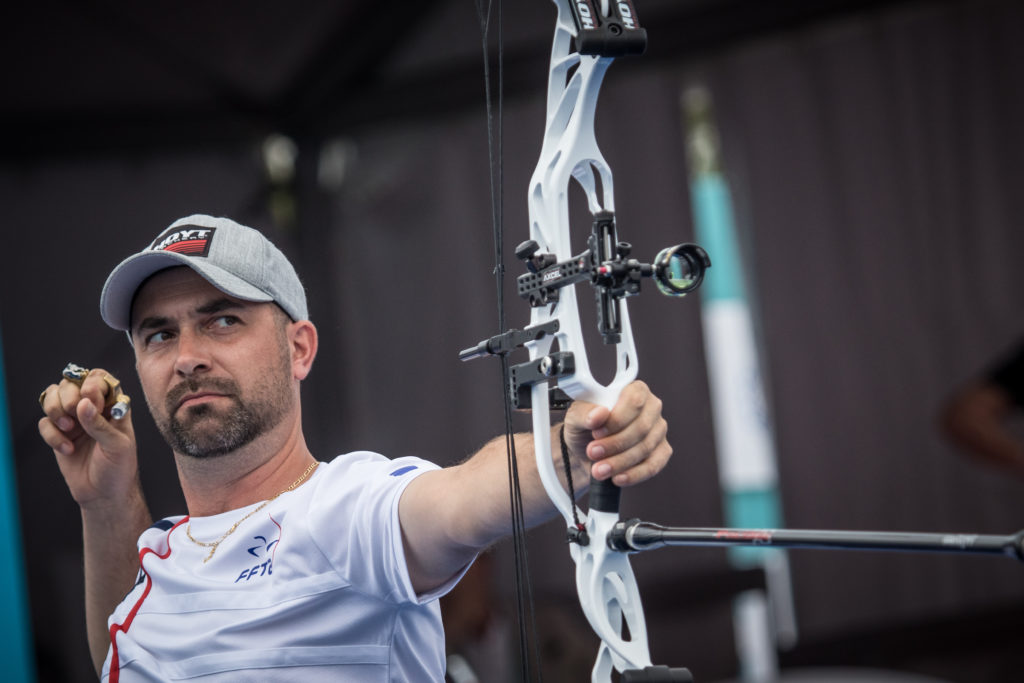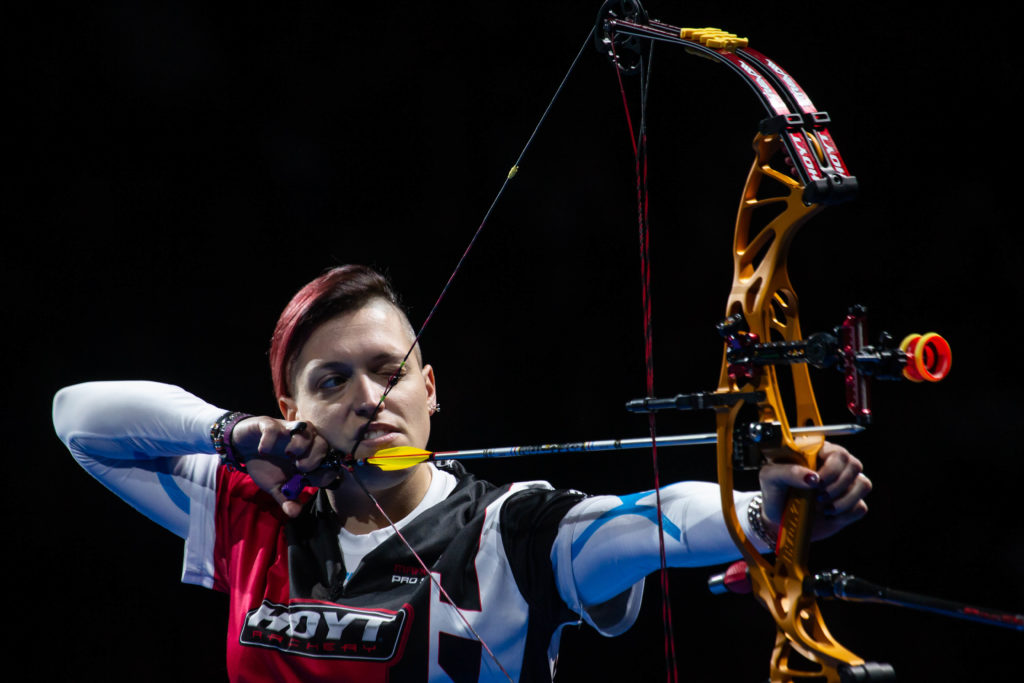
Will we see compound archery in the Olympics, and if so when? It is a common question in archery circles, and is entirely understandable from the perspective of compound shooters that see almost all modern competitions allowing multiple bowstyles. Yet the pinnacle of the sport remains a recurve-only affair.
The next three summer Olympic Games will be Tokyo in 2020, Paris in 2024, and Los Angeles in 2028. Compound is definitely not on the programme for the Tokyo Games, so what are the chances of it being added in the future?
In Den Bosch, Bow sat down with World Archery secretary-general Tom Dielen to assess the current situation in 2019 from the perspective of the international governing body.
When did the idea of having compound in the Olympics begin?
“I think the first attempt to get compound into the Olympics was in 2000.” said Dielen. “The answer from the IOC then was clearly that compound was too similar [to recurve]. So that was the situation at that time. The next time it was discussed was after London 2012 when we said, “okay, we want to try to have mixed team in Rio, and compounds for 2020.”

“There were many issues with Rio, and everything was blocked. And so we said, okay we will try to do mixed team in Tokyo, and then compound we will readdress.” he said.
“However, in the meantime, things have also become more clear, in terms of the criteria that you have to fulfil to be added to the programme. The situation in 2019 is that compound is not ready to be on the programme in 2020 – although it is too late to change 2020 – or in 2024. Because there are certain elements that are not addressed fully at the moment.”
“What we are doing is trying to put more compound competitions in other Games, like the continental Games. So it becomes more of a question of ‘why not?’, rather than trying to add something new. We succeeded in getting it into the European Games and the Pan-American Games, and we had it already in the Asian Games, although we had to fight to keep it there. Some might say it’s very few athletes [compared to recurve], but a few is better than none.
Not all continental Games, however, have equal numbers of archery athletes. “It’s only a team of 20 athletes for the Pan-American Games; ten men and ten women. So there’s not that much depth, and that’s one reason where it is an issue for 2024 is that there is not enough depth, especially in the women, and not enough quality further down the field.” said Dielen.
Compound around the world
Olympic events – at least, new ones – have to be inclusive in the sense that the whole world should be able to be involved in some way. Currently compound archery is much more focused in North America and Europe, with small pockets of competitors around the world. This has long been a sticking point to getting compound added to the events list.
“In terms of universality, it’s clear that that Africa will need to show a level of activity. But okay, we have South Africa, we have Egypt, we have Namibia. There’s some activity in compound in Morocco. In an ideal scenario, at the next African Games, if we can have compound there that would send a strong message.”
“We hope that with the continental Games the level will progress, like we now see in Asia. We think the same will happen as in Europe and in the Americas. In Africa, I spoke to the man in charge there, they can imagine it for the next edition of the African Games. The thing is, they have to guarantee at least eight countries. But it’s something that could happen.”
“We also have compound at the World Games in Birmingham, where we really want to make it the event. The next one of those is in China in 2025. That year is more or less the timeframe that the IOC would be would be looking for events in 2028.”
“I had a discussion with the IOC sports director and I said, ‘okay we want to have compound considered for 2028, you tell us what makes most sense for you’. Do we go for 60 metres, which will probably be the compound distance by 2028? “
“That’s one option, where we reuse the Olympic venue for a second event. Another option is we use the shooting venue in the second week and we do it indoors. Or we modify what we have for field, to make it a really an urban event and we have it in the urban park, where you have the BMX and the climbing and so on. They could have Parkour in the Games by that time, and I can easily imagine it in the same venue as Parkour. There is a possibility there.”
“As for which one is more likely: I have no idea. I can see pros and cons for all of them. We can’t see it from an archery perspective. It has to fit in with the global picture. It’s really not us at the moment deciding which of the three options to go for. It’s for the IOC to tell us which option makes more sense. Because to have a chance of being added it needs to be very much compatible what the overall picture of the IOC has for the Games.”
“So at the moment we keep on building on the outdoor, but at a certain moment, based on that there could be a different option taken.”

“But it’s not us making that call, it will be the IOC telling us which makes more sense, and by doing that we dramatically increase the chance of it being added.”
“Also, Los Angeles wants to really be a ‘game-changer’ again, like they were in ’84. So there will be quite some changes to the programme in 2028. I’m not worried at all for archery, although some other sports might be worried.”
How compound could be added to the Games
The process for a compound competition getting added to the Games is complex. There are two different elements: the sports programme (‘archery’), then there is the event programme (‘recurve men’s team’).
There are 28 sports at the moment, plus additional sports proposed by the organising committee – five in Tokyo, and four in Paris. There is an IOC session to decide yes or no if sports can be added, a process that happens five years before the Games; in June this year they will decide the sports for Paris.
The events programme – a much easier process – consists of the international federations proposing ideas to the IOC, and then the IOC Olympic Programme Commission evaluating it.
The final stage is going to the executive board, which will take place in December 2020 for Paris 2024 – and most likely December 2024 for the LA Games in 2028.
One of the biggest problems with adding either sports or events to the Games is the Agenda 2020 policy of the IOC, which seeks to cap the number of athletes attending any Summer Games to 10,500.
This cap was put in place to keep down the costs of hosting the Olympics, in the face of increasing local and international opposition to bids. It would be extremely unlikely that the IOC would agree to a further 128 athletes on top of the 128 recurve athletes attending, so it seems almost certain that a compound competition would have smaller numbers than a recurve competition.

An elite-of-the-elite competition seems most likely. “A lot of discussion will have to take place to see if we could have 32 places – 16 men, 16 women – which would be ideal, or whether we might have to reduce some quotas in the recurve. It’s too soon today to see what we will do.” said Dielen.

“But it’s clear that more medals is good for everyone. More countries getting medals. I always go back to a discussion I had with one of the Indian team after the Asian Games and he said well, we only won medals in compound. I said well, in the medal ranking there’s not an asterix against India saying ‘you only won medals in compound’.”
“Medals are medals. There are more opportunities and it opens up other countries as well: South Africa, Namibia, Latin America. We would see more of New Zealand, we could imagine seeing new countries that we don’t know yet. It’s not that it’s easier, but the lead-in time [to develop a compound team] is shorter.”
“If you look at the analysis Paris did for additional sports, it gives a good example. A lot of people don’t understand why karate, for instance, is not in Paris because karate is a huge sport in France.”
“It has the second biggest karate federation after Japan. But if you listen to the explanation of Paris on why they wanted breakdancing instead of karate it makes 100% sense, because it sits really within the strategy of the Games as such, and yes, a lot people are not happy with it. So we need to see what fits in the strategy the best from the IOC point of view, and from a LA 2028 point of view.”
It is clear that compound has a long road ahead to inclusion in the biggest competition of all, and whether it will happen may well depend on what the sporting landscape looks like several years down the road. There may be interesting times ahead.

